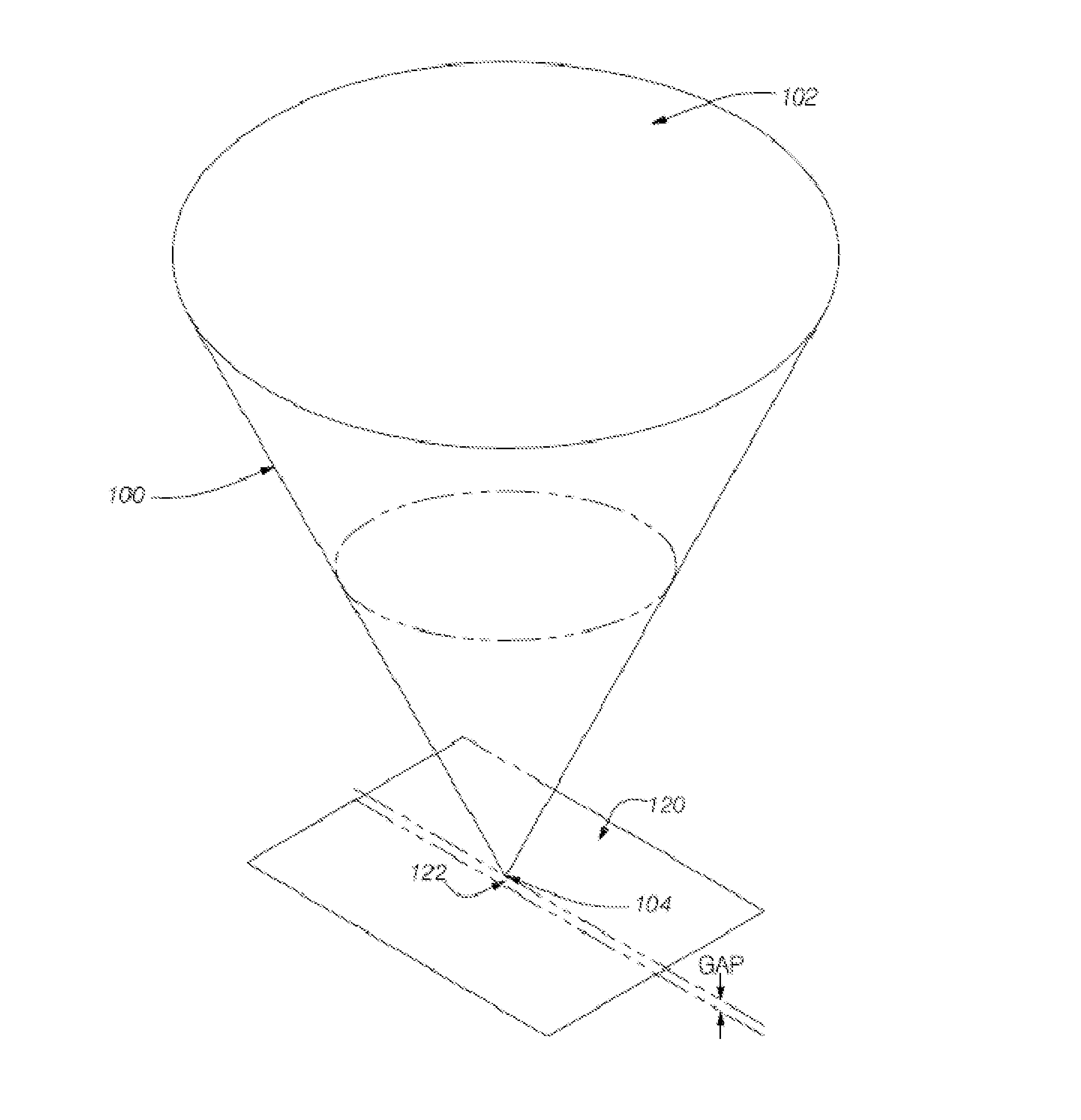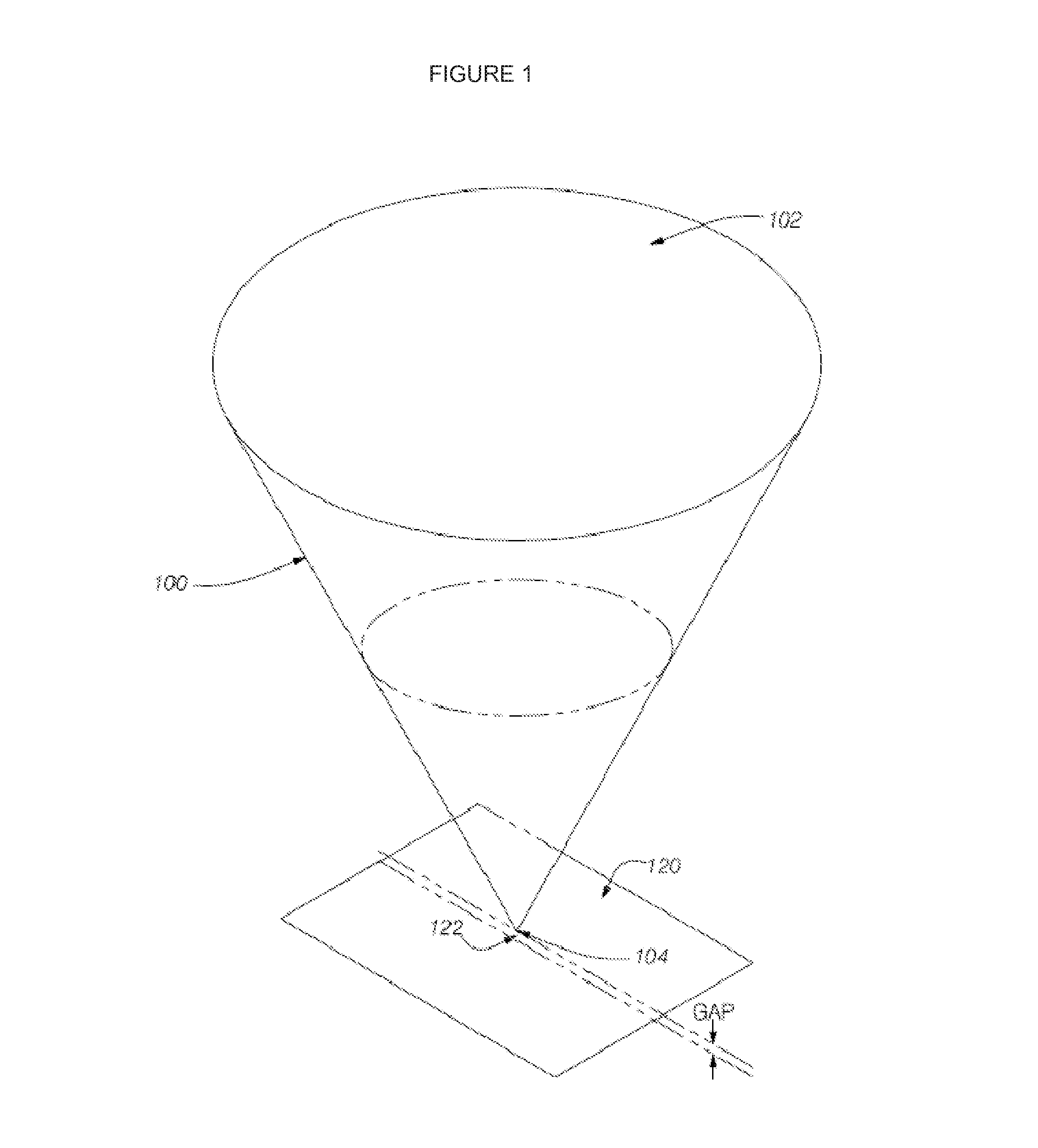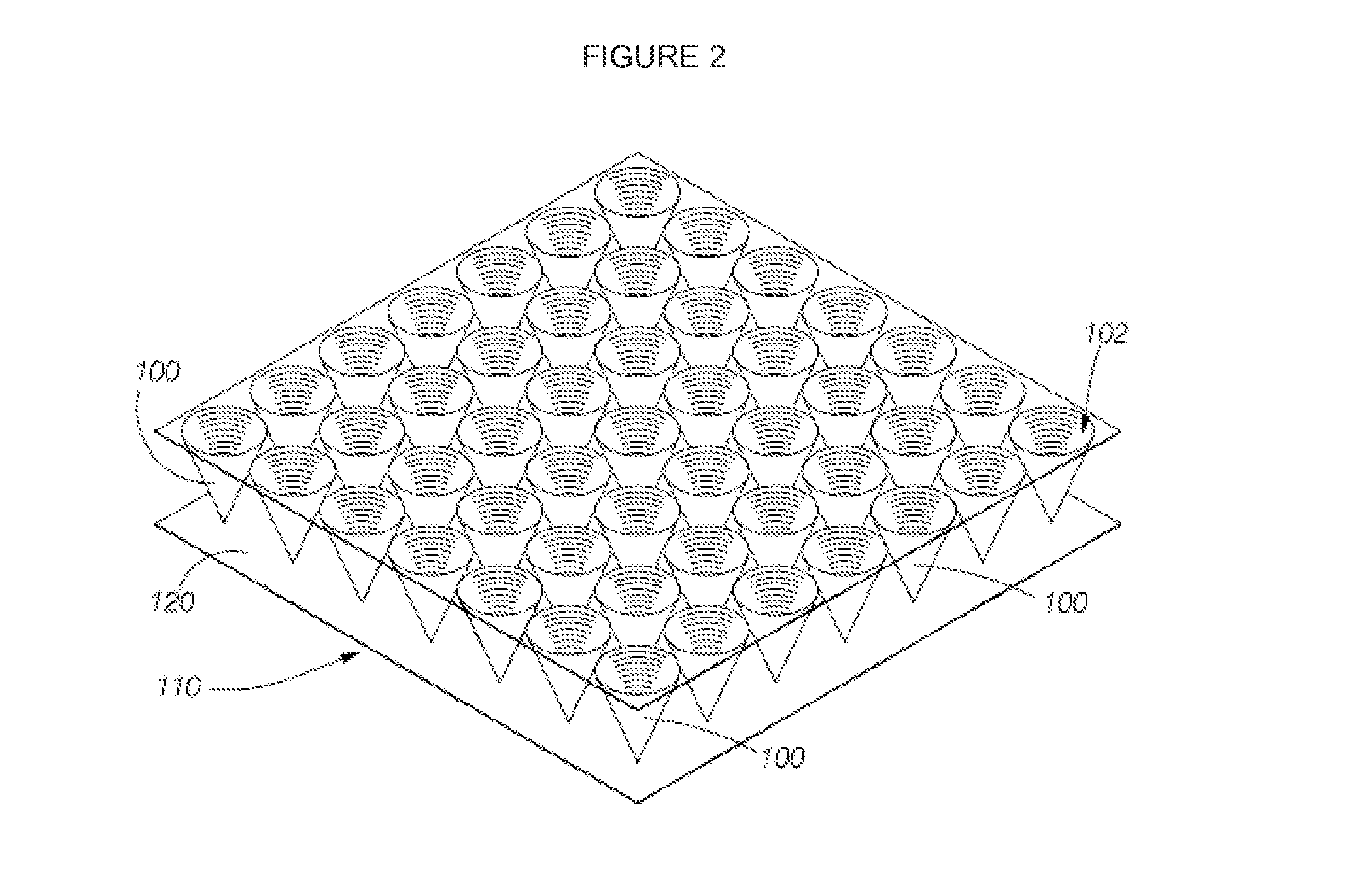Optical antennas with enhanced fields and electron emission
a technology of optical antennas and electron emission, applied in the field of optical antennas with enhanced fields and electron emission, can solve the problems of high material cost, high material cost associated with the use of materials and manufacturing processes, and physical limitation of pv technology to less than 33% energy collection efficiency, etc., to achieve enhanced particular frequencies, improve the field intensity, and increase the packing density
- Summary
- Abstract
- Description
- Claims
- Application Information
AI Technical Summary
Benefits of technology
Problems solved by technology
Method used
Image
Examples
Embodiment Construction
[0053]The drawings and the following description illustrate preferred embodiments of a system and method for implementing the present invention. In some embodiments, other shapes and configurations are also used to create the disclosed effect of collecting the electric field from the electromagnetic wave and funneling the electric field to a localized field region above a conducting plane where electrons are emitted from the distress field point or line.
[0054]The term “waveguide,” as used herein, refers to a structure or device that guides waves, such as electromagnetic energy.
[0055]The term “electromagnetic energy,” as used herein, refers to electromagnetic radiation (also “light” herein), which is a form of energy exhibiting wave-like behavior. Electromagnetic radiation includes radio waves, microwaves, infrared radiation, visible light, ultraviolet radiation, X-rays and gamma rays. Electromagnetic radiation includes photons, which is the quantum of the electromagnetic interaction...
PUM
 Login to View More
Login to View More Abstract
Description
Claims
Application Information
 Login to View More
Login to View More - R&D
- Intellectual Property
- Life Sciences
- Materials
- Tech Scout
- Unparalleled Data Quality
- Higher Quality Content
- 60% Fewer Hallucinations
Browse by: Latest US Patents, China's latest patents, Technical Efficacy Thesaurus, Application Domain, Technology Topic, Popular Technical Reports.
© 2025 PatSnap. All rights reserved.Legal|Privacy policy|Modern Slavery Act Transparency Statement|Sitemap|About US| Contact US: help@patsnap.com



